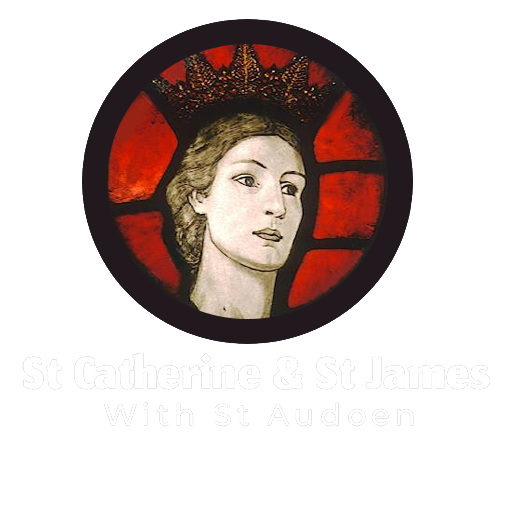About Us
St Audoen's Church
St. Audoen (or Ouen), Bishop of Rouen, flourished in the 7th century, and a Church was dedicated to him in Dublin by the Anglo-Normans after they had seized control of the city; erected, in 1190, on the site of an older Church dedicated to St. Columcille. Once one of the most prosperous Parishes within the city, the Church was attended by the Lord Mayor and Corporation. It is said that the last Catholic and the first Protestant Lord Mayors of Dublin are buried under the old stone floor. The last surviving city gate stands close by.
At the Reformation the Irish Church became officially reformed, while most Irish people remained Catholic. The Parish declined towards the end of the 18th century, when many of the wealthy residents moved out, a process hastened by the Act of Union of 1800. GN Wright reported in 1825 that much of the Church was in a ruinous state, and “very few Protestants” remained in the Parish. One family, now resident in Enniskerry, merchants in the High Street in the 17th, retains a link with St Audoen’s Church to this day.
Towards the end of the 20th century St. Anne’s Chapel was re-roofed as a visitors’ centre in the care of the Office of Public Works (as it is now called), like the unroofed parts of the Church, given into the care of the Board of Works (as it was then called) at the disestablishment of the Church in 1870. The Chapel dates from Henry VI, who in 1430 granted the erection of a Chantry, dedicated to St. Anne. Its founders and their successors formed the Guild of St. Anne which survived the Reformation by many years.
In the Church porch is preserved an early Celtic gravestone which has been kept here or nearby since before 1309. It was first mentioned when Jon LeDecer, Mayor of Dublin, erected a marble cistern for water in Cornmarket and placed this stone against it. In 1826 it disappeared for many years, until found in front of the newly-erected Catholic Church of St Audoen, its noble portico graced with statues of the Blessed Virgin Mary, her mother St Ann and St Audoen, with his Bishop’s crozier.
In the porch below the tower lies the 15th century monument of Sir Roland Fitz-Eustace, Earl Portlester, who died in 1496, and his wife, Margaret, buried at Cotlandstown, County Kildare. Fitz-Eustace was Deputy Lord Lieutenant of Ireland, Lord Chancellor and High Treasurer. A Purbeck marble effigy of an unknown ecclesiastic is preserved close by, one of a number surviving in the vicinity of the city of Dublin.
Among those buried in the church were Sir Thomas Molyneux and his son Capel, and Edward Parry, Bishop of Killaloe (who died of the plague in 1650) and his descendants, and Lady Frances Brudenell. The Parry monument can be seen in the clergy vestry, defaced by the followers of Cromwell.
The tower houses six bells, three of which are among the oldest in Ireland, dating from 1423. They were unringable between 1898 and 1983, but after being re-tuned and re-hung are now rung every week. The Bürk electric clock in the Churchwarden’s vestry and some memorial brasses in the Church came from St. Peter’s Church in Aungier Street, closed in 1975. On its site stands the YMCA building, in which the east window from St Luke’s Church, the Coombe, now hangs. The War Memorial from St Matthias’ Church Adelaide Road, for many years preserved in Christ Church Leeson Park, by kind permission of its surviving Church of Ireland congregation, has recently been erected in St Audoen’s.

